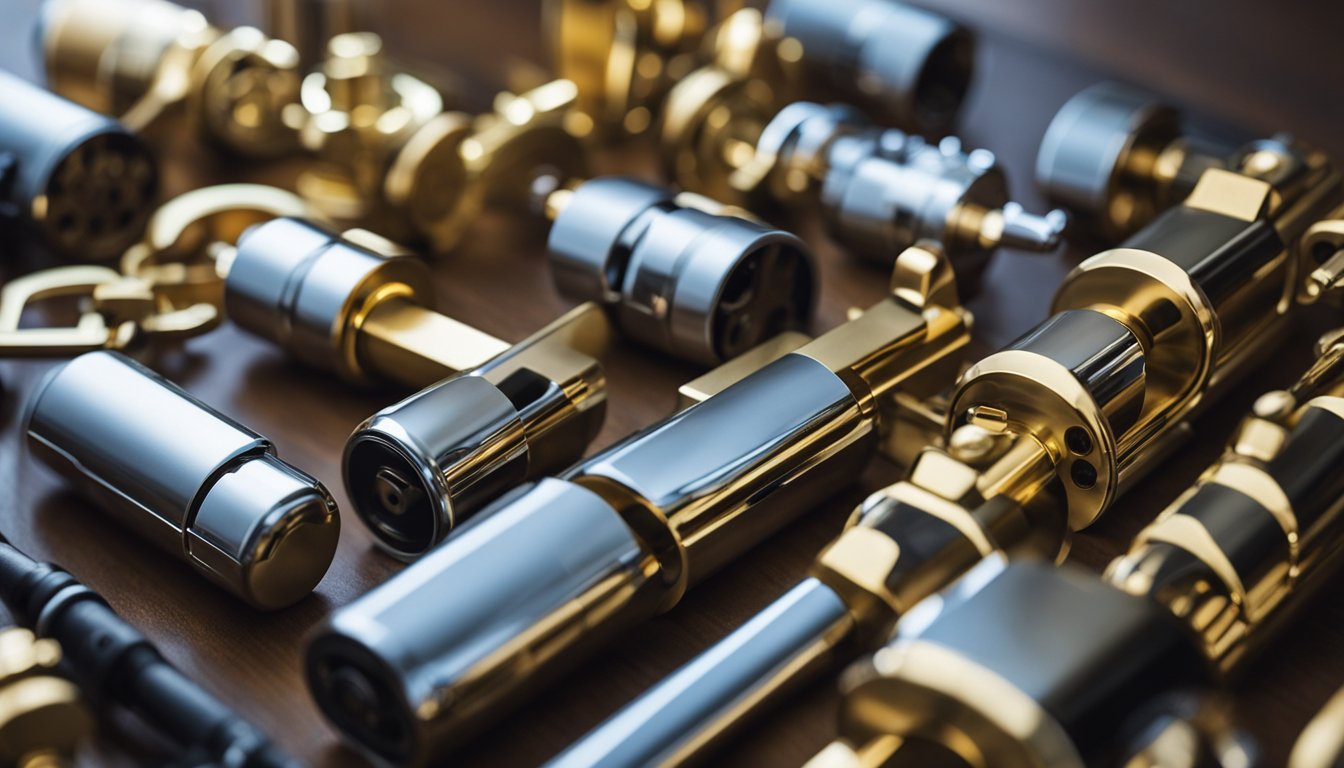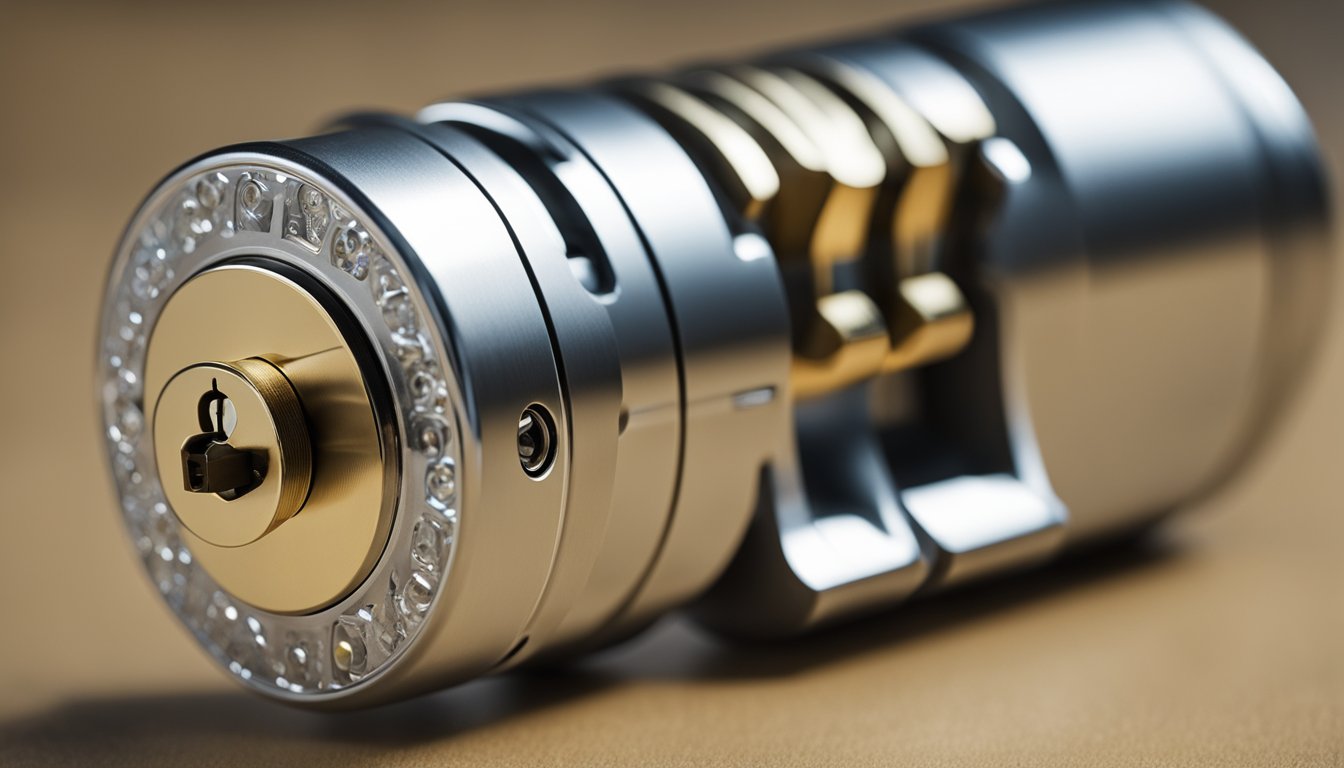Late updated: 19 Nov 2024 09:11
Written by: Elena Prescott
Guide To Choosing The Right Lock Cylinder: Expert Tips for Secure Selections
Choosing the right lock cylinder is crucial for ensuring the security of your home or business. With an array of locks available, navigating through the options might seem overwhelming. The key to selecting the perfect cylinder lock lies in understanding your specific security needs, the type of door it will secure, and the lock’s compatibility with the door.

Security features and advanced technology have evolved, offering more sophisticated options, including keyless entry systems. Whether you opt for traditional or modern locks, knowing about the different types—like euro cylinders, single-cylinder models, or advanced electronic systems—helps in making an informed decision. Our guide will provide you with all the necessary insights to make a choice that balances security and convenience.
It’s not just about picking any lock; it's about evaluating factors like key control, rekeying options, and resistance to picking or drilling. We aim to equip you with knowledge that ensures peace of mind when securing where you live or work. Dive into the details to explore what will work best for you and maximise the security of your premises.
Key Takeaways
- Identify your specific security needs.
- Choose the correct type of lock cylinder for your door.
- Consider additional security features for enhanced protection.
Understanding Lock Cylinder Basics
Lock cylinders are critical to the security of any entryway, determining how a door can be locked and unlocked through their internal mechanisms. We will explore various types and the role of British Standards in ensuring security and quality.
Exploring Cylinder Lock Varieties
Lock cylinders, integral to modern security systems, come in various forms to suit different needs. Euro cylinder locks are among the most popular, often seen in residential properties. Double cylinders offer locking from both sides, enhancing security but requiring keys on both ends.
Half euro cylinders provide a simpler option, locking from one side, suitable for doors where interior key access isn't necessary. Rim cylinders are another variety commonly used with rim locks, providing a traditional approach to key-operated security.
These varied types allow flexibility in installation and usage, catering to specific security needs. When selecting a cylinder, consider factors such as door thickness and the level of security required. This ensures that the chosen lock cylinder not only fits the door perfectly but also meets the security expectations for the space it protects.
The Significance of British Standards
British Standards play a crucial role in maintaining the quality and security of lock cylinders. The British Standards Institution (BSI) provides ratings that indicate the level of security a lock cylinder offers. For example, locks with a three-star rating typically have anti-snap and anti-pick features, enhancing their resistance to common burglary techniques.
Our reliance on these ratings ensures that we do not compromise on quality when choosing cylinders. Compliance with these standards not only guarantees product integrity but also gives users peace of mind. Whether you're choosing a euro cylinder or another type, ensuring it meets relevant British Standards is vital to maintaining effective security measures.
Advanced Security Features and Considerations

Security in locks is significantly enhanced by using specialised features. Key systems and anti-snap mechanisms play crucial roles in boosting protection for various locks, including thumb-turn and euro cylinder designs.
Keyed Alike and Restricted Key Systems
Keyed alike systems allow multiple locks to be opened by a single key, offering convenience without compromising security. This option is particularly beneficial for commercial properties where we need to manage numerous access points. In contrast, restricted key systems employ unique key profiles to prevent unauthorised duplication, enhancing security.
Such systems are ideal for environments requiring controlled access. They ensure only specific individuals can obtain keys, reducing the risk of unauthorised entry. These systems are practical for both commercial and residential settings, where maintaining tight security is a priority.
Anti-Snap Measures for Enhanced Protection
Anti-snap euro cylinder locks are designed to counteract lock snapping, a common break-in method. These locks feature a sacrificial snap line that protects the lock's core. When forced, the outer part snaps off, keeping the lock secure.
For UPVC doors, choosing anti-snap cylinders is essential to deter burglars. These measures significantly increase security, making it more difficult for intruders to compromise the lock. This feature is crucial for exterior doors, providing peace of mind for property owners.
In internal doors, while the need might be less critical, incorporating such security features ensures an added layer of protection. Adopting these measures shows our commitment to safeguarding assets and premises effectively.
Frequently Asked Questions

In our exploration of lock cylinders, we've identified key aspects such as measurement methods, selection criteria, compatibility concerns, and various types. Understanding these will aid in making informed choices.
How does one measure a door lock cylinder?
To measure a door lock cylinder accurately, remove the cylinder and measure from the centre of the screw hole to each end. This provides two measurements, known as the external and internal lengths, usually represented in millimetres. Ensuring precision is crucial for a proper fit.
What factors should be considered when selecting a lock cylinder?
When choosing a lock cylinder, consider security features like anti-snap, anti-drill, and anti-pick protection. Check compatibility with your door type. Also, weigh in aesthetic preferences and budget constraints. These factors collectively ensure your choice supports both security and appearance needs.
Can door lock cylinders be interchanged, and if so, under what circumstances?
Interchanging door lock cylinders is possible when the new cylinder matches the existing lock type and size. Ensure compatibility with the door's mechanism. In some cases, alterations might be necessary, but professional advice is recommended to maintain security and functionality.
What are the different types of lock barrels available?
Various lock barrels exist, including euro cylinders, oval cylinders, and rim cylinders. Each offers different locking mechanisms and security levels. Euro cylinders are popular in residential use, while rim cylinders are common in older properties. Choose based on specific security needs and door compatibility.
How are Euro cylinder lock sizes determined?
Euro cylinder sizes are determined by measuring the length from the centre of the lock, covering both external and internal dimensions. These measurements are typically given in millimetres. Ensure the correct size to avoid security gaps or installation issues.
In terms of lock sizes, how are dimensions typically represented in millimetres?
Lock dimensions are generally listed as two numbers separated by a slash, such as 40/40. The first number denotes the length on the external side, and the second refers to the internal length. Accurate measurements ensure proper alignment and security efficacy.
